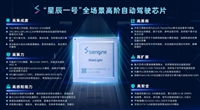2525 AND 2535
USB
POWER CONTROL
SWITCHES
APPLICATIONS INFORMATION
Overcurrent
compared to those of power packages; it is good design practice
to check power dissipation and junction temperature. The first
step is to find rDS(on) at the input voltage and operating tempera-
ture. Next, calculate the power dissipation using:
PD = rDS(on) x I2
Finally, calculate the junction temperature:
TJ = PD x RθJA + TA
A sense FET is employed for overcurrent conditions. Unlike
current-sense resistors, sense FETs do not increase the series
resistance of the current path. When an overcurrent condition is
detected, the device maintains a constant output current and
reduces the output voltage accordingly. Complete shutdown
occurs only if the fault is present long enough to activate
thermal limiting.
where:
TA = ambient temperature °C
RθJA = thermal resistance (SOIC = 108°C/W, DIP = 60°C/W).
Three possible overload conditions can occur. In the first
condition, the output has been shorted before the device is
enabled or between VIN has been applied. The device senses
the short and immediately switches into a constant-current
output.
Thermal protection
Thermal protection prevents damage to the IC when heavy-
overload or short-circuit faults are present for extended periods
of time. The faults force these devices into constant-current
mode, which causes the voltage across the high-side switch to
increase; under short-circuit conditions, the voltage across the
switch is equal to the input voltage. The increased dissipation
causes the junction temperature to rise to high levels. The
protection circuit senses the junction temperature of the switch
and shuts it OFF. Hysteresis is built into the thermal sense
circuit, and after the device has cooled approximately 20°, the
switch turns back ON. The switch continues to cycle in this
manner until the load fault or input power is removed.
In the second condition, the short occurs while the device is
enabled. At the instant the short occurs, very high currents may
flow for a short time before the current-limit circuit can react .
After the current-limit circuit has tripped (reached the
overcurrent trip threshold) the device switches into constant-
current mode.
In the third condition, the load has been gradually increased
beyond the recommended operating current. The current is
permitted to rise until the current-limit threshold is reached or
until the thermal limit of the device is exceeded. The device is
capable of delivering current up to the current-limit threshold
without damage. Once the threshold has been reached, the
device switches into its constant-current mode.
Undervoltage lock-out (UVLO)
An undervoltage lockout ensures that the power switch is in the
OFF state at power up. Whenever the input voltage falls below
approximately 2 V, the power switch will be quickly turned
OFF. This facilitates the design of hot-insertion systems where
it is not possible to turn OFF the power switch before input
power is removed. The UVLO will also keep the switch from
being turned ON until the power supply has reached at least
2 V, even if the switch is enabled. Upon reinsertion, the power
switch will be turned ON, with a controlled rise time to reduce
EMI and voltage overshoots.
Fault Flag (FLG)
The FLG open-drain output is asserted (active low) when an
overcurrent or over-temperature condition is encountered. The
output will remain asserted until the overcurrent or over-
temperature condition is removed. Connecting a heavy
capacitive load to an enabled device can cause momentary false
over-current reporting from the inrush current flowing through
the device, charging the downstream capacitor. An RC filter
can be connected to the terminal to reduce false overcurrent
reporting. Using low-ESR electrolytic capacitors on the output
lowers the inrush current flow through the device during hot-
plug events by providing a low impedance energy source,
thereby reducing erroneous overcurrent reporting.
Power supply considerations
A 0.1 µF ceramic bypass capacitor between IN and GND, close
to the device, is recommended. Placing a high-value electro-
lytic capacitor on the output terminals is also desirable when the
output load is heavy. The capacitor reduces power supply
transients that may cause ringing on the input. Also, bypassing
the output with a 0.01 µF to 0.1 µF ceramic capacitor improves
the immunity of the device to short-circuit transients.
Power dissipation and junction temperature
The low on-resistance of the n-channel MOSFET allows small
surface-mount packages, such as an SOIC, to pass large
currents. The thermal resistance of these packages are high
115 Northeast Cutoff, Box 15036
Worcester, Massachusetts 01615-0036 (508) 853-5000
8










 三星深化印度制造布局,供应链本地化进程加速
三星深化印度制造布局,供应链本地化进程加速

 芯擎科技“星辰一号”自动驾驶芯片点亮成功,2025年量产在即
芯擎科技“星辰一号”自动驾驶芯片点亮成功,2025年量产在即

 纳微科技震撼发布GaNSlim革新氮化镓功率芯片
纳微科技震撼发布GaNSlim革新氮化镓功率芯片

 意法半导体发布第四代SiC技术,助力电动汽车电驱
意法半导体发布第四代SiC技术,助力电动汽车电驱
